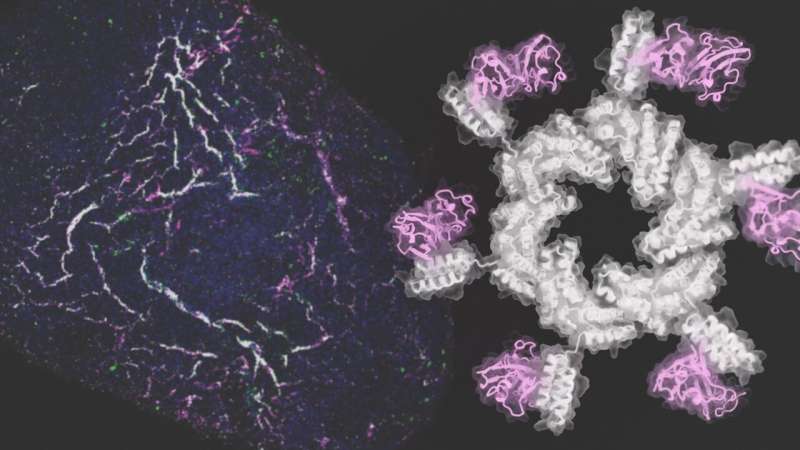This article has been reviewed according to Science X's editorial process and policies. Editors have highlighted the following attributes while ensuring the content's credibility:
fact-checked
peer-reviewed publication
trusted source
proofread
Computer-designed proteins guide stem cells to form blood vessels

Using computer-designed proteins, researchers have now shown they are able to direct human stem cells to form new blood vessels in the lab. This milestone in regenerative medicine offers new hope for repairing damaged hearts, kidneys, and other organs.
Scientists at the University of Washington School of Medicine led the project. Their findings were published June 10 in the journal Cell.
"Whether through heart attack, diabetes, and the natural process of aging, we all accumulate damage in our body's tissues. One way to repair some of this damage may be to drive the formation of new blood vessels in areas that need healthy blood supply restored," said Hannele Ruohola-Baker, a senior author of the study. She is a professor of biochemistry at the University of Washington School of Medicine and associate director of the Institute for Stem Cell and Regenerative Medicine at UW Medicine.
Growth factors play key roles in tissue development, wound healing, and cancer. By binding to receptors on the outside of cells, these molecules drive changes inside. Researchers have for decades attempted to repurpose natural growth factors as regenerative medicines with some limited success, but many of these experimental treatments have failed due to imprecision.
"We set out to create custom proteins that would engage with cellular growth factor receptors in extremely precise ways. When we made these molecules in the lab and treated human stem cells with them, we saw different kinds of vasculature develop depending on which proteins we used. This is a whole new level of control," explained Natasha Edman, a lead author of the study and recent graduate of the UW Medical Scientist Training Program.
The researchers used computers to design ring-shaped proteins, each targeting up to eight fibroblast growth factor receptors. They found that by varying the size of the rings and other protein properties, they could control how stem cells matured under laboratory conditions.
The resulting vascular networks were functional and mature. They formed tubes, healed when scratched, and absorbed nutrients from their surroundings as expected. When transplanted into mice, these tiny webs of human blood vessels grew connections to the animal's circulatory system within three weeks.
"This study shows that custom proteins with exquisite biological functions can be created by design. This will help scientists understand biology and ultimately prevent and repair disease," said senior author David Baker, a Howard Hughes Medical Institute Investigator, professor of biochemistry, and director of the Institute for Protein Design at the University of Washington School of Medicine.
"We decided to focus on building blood vessels first, but this same technology should work for many other types of tissues. This opens up a new way of studying tissue development and could lead to a new class of medicines for spinal cord injury and other conditions that have no good treatment options today," said Ashish Phal, a lead study author and bioengineering Ph.D. candidate at UW.
This research was performed at the Institute for Protein Design and Institute for Stem Cell and Regenerative Medicine at UW Medicine and included collaborators from New York University School of Medicine, Tehran University of Medical Sciences, Yale University School of Medicine, Brotman Baty Institute for Precision Medicine, and Allen Discovery Center for Cell Lineage Tracing.
More information: Natasha I. Edman et al, Modulation of FGF pathway signaling and vascular differentiation using designed oligomeric assemblies, Cell (2024). DOI: 10.1016/j.cell.2024.05.025
Journal information: Cell
Provided by University of Washington School of Medicine



















